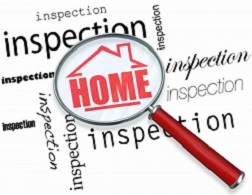How Young Is ‘Too Young’ to Buy Your First Home? Getting Started Early Has Its Ups and Downs
 Many millennials are expected to enter the housing market in the next year with the interest rates still low. However, while it may be a good time, it does not necessarily mean that it’s the right time for you to make the investment. If you’re currently weighing your options when it comes to home ownership, here are some things to consider before you decide put the money down.
Many millennials are expected to enter the housing market in the next year with the interest rates still low. However, while it may be a good time, it does not necessarily mean that it’s the right time for you to make the investment. If you’re currently weighing your options when it comes to home ownership, here are some things to consider before you decide put the money down.
Are You Struggling With Student Debt
It’s possible to invest in a home when you’re still paying down student debt, but if you’re also struggling with a low-paying job and a high debt load, it may not be the right time to buy. Instead of trying to make ends meet to pay a monthly mortgage payment, it might be a better decision to pay off some of your debt, lower your interest costs and consider investing later on. This will also enable you to afford more home when you decide the time is right to buy.
Do You Have A Down Payment?
It can be a good testament to your financial ability if you want to purchase a home at a young age, but having a down payment is one of the most important things to have on hand when it comes to investing. If you’ve come up with 20% of the purchase price, this will allow you to avoid mortgage loan insurance. If you don’t have this amount, however, or much of anything saved up, you may want to create a budget in order to save up for your down payment.
Are Your Ready To Commit?
Many people romanticize the idea of buying a home since it’s something that really belongs to them, but it’s important to be prepared for the monthly mortgage payments, home maintenance and all the other fees and responsibilities associated with home ownership. It’s great if you want to invest, but if you want to travel or explore different job opportunities or even continue your education, an investment commitment may not be the best choice.
It can be a great financial benefit for your future to invest in a home at a young age, but it’s important to ensure you’re ready for the commitment by having your debt paid down and having money saved.
 There’s a whole lot to learn when buying one’s first home, an investment that can bring joy, but sometimes, grief. A competent real estate agent can assist in locating those homes that meet the home buyer’s needs and can advise on factors such as market value of the home and neighborhood services. The agent will help the buyer through the negotiation and purchase process. But the buyer should take responsibility to make sure that the steps below are taken.
There’s a whole lot to learn when buying one’s first home, an investment that can bring joy, but sometimes, grief. A competent real estate agent can assist in locating those homes that meet the home buyer’s needs and can advise on factors such as market value of the home and neighborhood services. The agent will help the buyer through the negotiation and purchase process. But the buyer should take responsibility to make sure that the steps below are taken. Are you thinking of buying a new home this spring or summer? If so, you’re not alone. Many thousands of individuals and families alike will become homeowners this year. Whether you’re a first-time buyer or a seasoned veteran of the housing market, you probably know there are significant choices to make. One of the big decisions you will have to ponder is how much you want to invest in your down payment.
Are you thinking of buying a new home this spring or summer? If so, you’re not alone. Many thousands of individuals and families alike will become homeowners this year. Whether you’re a first-time buyer or a seasoned veteran of the housing market, you probably know there are significant choices to make. One of the big decisions you will have to ponder is how much you want to invest in your down payment.